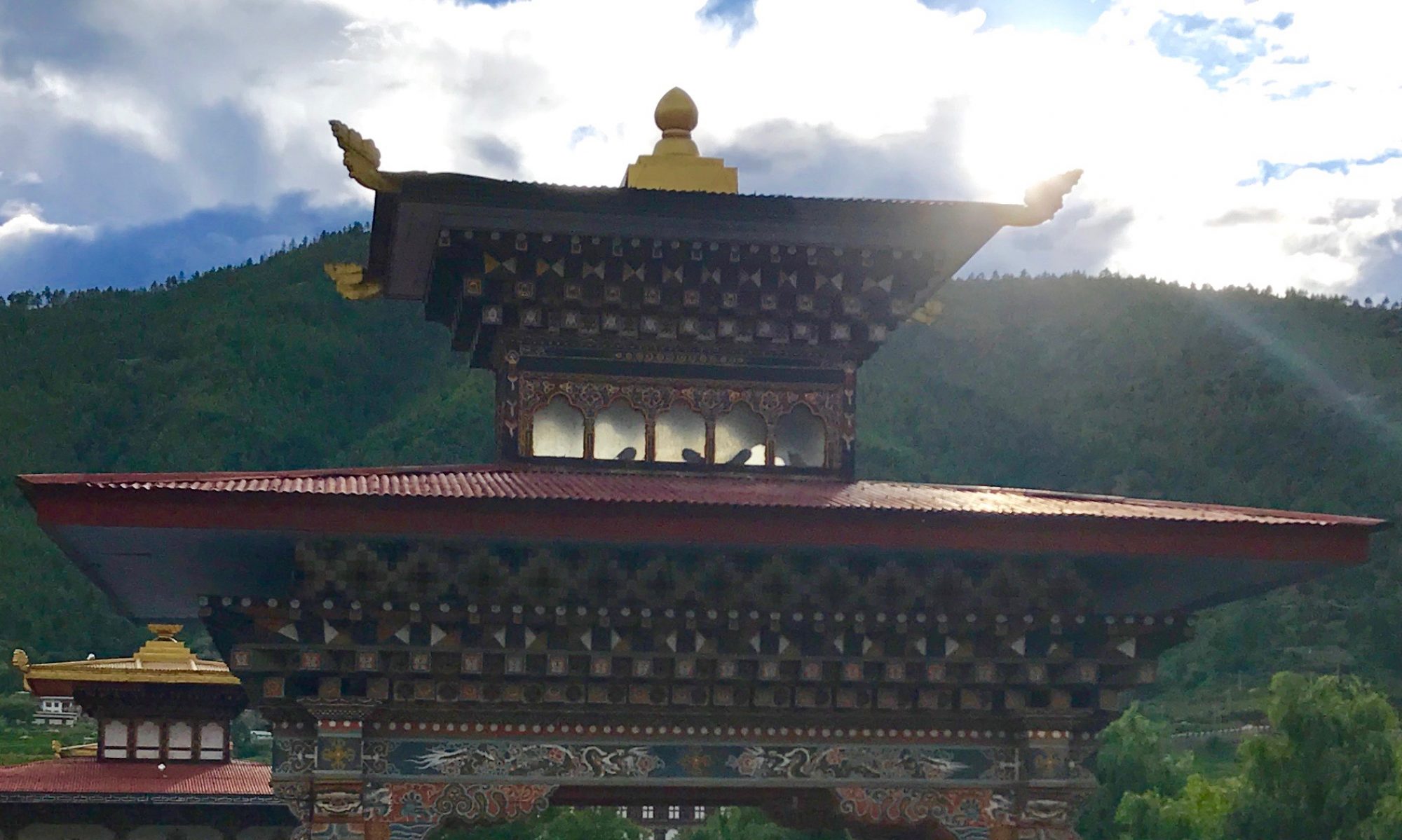Given my enthusiastic response to visiting the temple, James and Jeremy decide to come with me on Thursday. I had told them of meeting Dechen (the President’s wife and the second-grade teacher at Jeremy’s school at the temple on Wednesday, and the way my presence was clearly noted around the community. On Thursday, perhaps because James was present (as the man of the household), the head monk brought us some holy water again. By this time, I had learned enough from watching others to coach James and Jeremy: you slurp from your hand, and then wipe whatever moisture remains over the top of your head and down the back.
While others (at least of a younger generation) seem to take photos inside the temple without constraint, I have been very mindful of Jigme’s warning against photography, so you will have to settle for a verbal description.
The older members of the lay community gather at the eastern side of the temple. We all shed our shoes before entering. Many of the older women are dressed in red shawls; the older men seem to wear lighter plaid ghos and of course rather battered kabneys. They all have prayer beads, and the were delighted to see Jeremy handling our family set.
The walls of the temple are lushly decorated with paintings in dark greens and reds: some places seem to be landscapes, perhaps with demons coming out of caves, or trapped into the earth through the power of holy men and women. At the front, the statues come out of the walls, as it were, as a kind of bas-relief sculpture. There’s a large golden Padmasambhava, with other golden (male) figures beside him. Some of these also seem like (smaller) versions of the same Guru Rinpoche. In between the male statues are smaller female dakinis. There are also protector deities in the corners of the building.
Bright, primary-colored fabric is hung from the ceiling in a wild range of patterns: some of the fabric is sewn in patterns that create chevrons along a line (I’ll try to find a photo elsewhere to show the effect). Other examples of flags or bunting are hung in circular patterns. So much color! Visual explosions everywhere.
At the same time, it’s hard not to be struck by some of the contrasts: one’s eye follows the exquisite paintings on beams–only to be struck by the electric lights and fans. Power cord snake over the hand of Guru Rinpoche (the biggest statue in the temple), through the dorje (or thunderbolt) he holds, across to the altar with (smaller) Buddha, then to the pillar on which the fans are mounted. I wonder if there’s an intentional pun here, running the electrical cord through the spiritual thunderbolt.
There are four rows of monks chanting, reading from books of long thin pages filled with Tibetan script. But this sound pales beside the speakers that amplify the Buddhist-version-of-a-cantor’s voice, which makes the whole event seem more like a rock concert or a Broadway performance. I love the way I feel the sound in my chest cavity, as if the chanting is coming through me, speaking through me.
